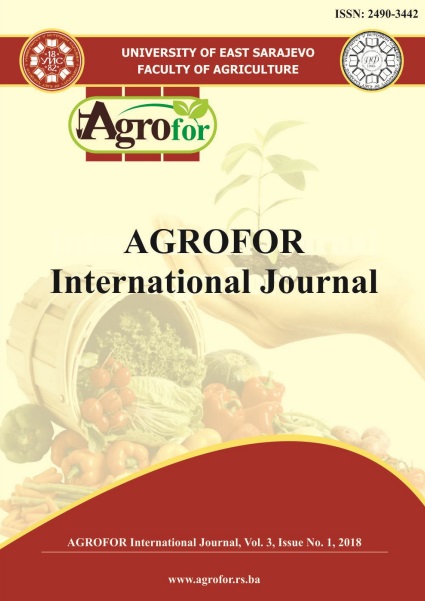EFFECT OF BIOFERTILIZER AND COMPOST ON NITRATE STATUS, YIELD AND QUALITY OF POTATO TUBER UNDER NEWLY RECLAIMED SANDY SOIL
DOI:
https://doi.org/10.7251/AGRENG1801139EAbstract
This investigation was carried out during the two summer seasons of 2015 and
2016 in sandy soil on potato culitvar "Sante" to study the effect of using 100%
compost (15 t/fed.) and 50% compost + nitrogen fixing bacteria (Azotobacter, and
Pseudomonas alone or together) on potato yield and quality as compared to the
conventional mineral fertilization (120-75-150 kg/fed. NPK + 5 ton
compost/fed.(control)). No significant differences in tubers yield/fed. were detected
between mineral fertilization (control) and using 100% compost (15
t/fed).However, control treatment significantly produced a high yield per feddan,
more than using 50% compost + any biofertilizer treatment.Using compost
treatment at 15 t/fed.execeed all biofertilizer treatments in marketable yield in both
seasons, but without significant differences as compared with mineral fertilization
(control).No significant differences in tuber dray matter and content of starch in
tuber were found between using compost treatment at 15 ton/fed. and mineral
fertilization treatment (control)in both seasons. Nevertheless, application of 50%
compost+ 4 applications of Azotobacter and Pseudomonas had the highest tuber
concentrations of starch and nitrogen with significant differences as compared with
the mineral fertilization.Using50% compost + 4 applications of Azotobacter or
Pseudomonas or both (Azotobacter + Pseudomonas )and application of 100%
compost caused producing potato tubers with the lowest concentration of nitrate
with significant differences as compared with the mineral fertilization. No
significant differences were detected between mineral and organic fertilizers
concerning P and K concentrations in tubers.

